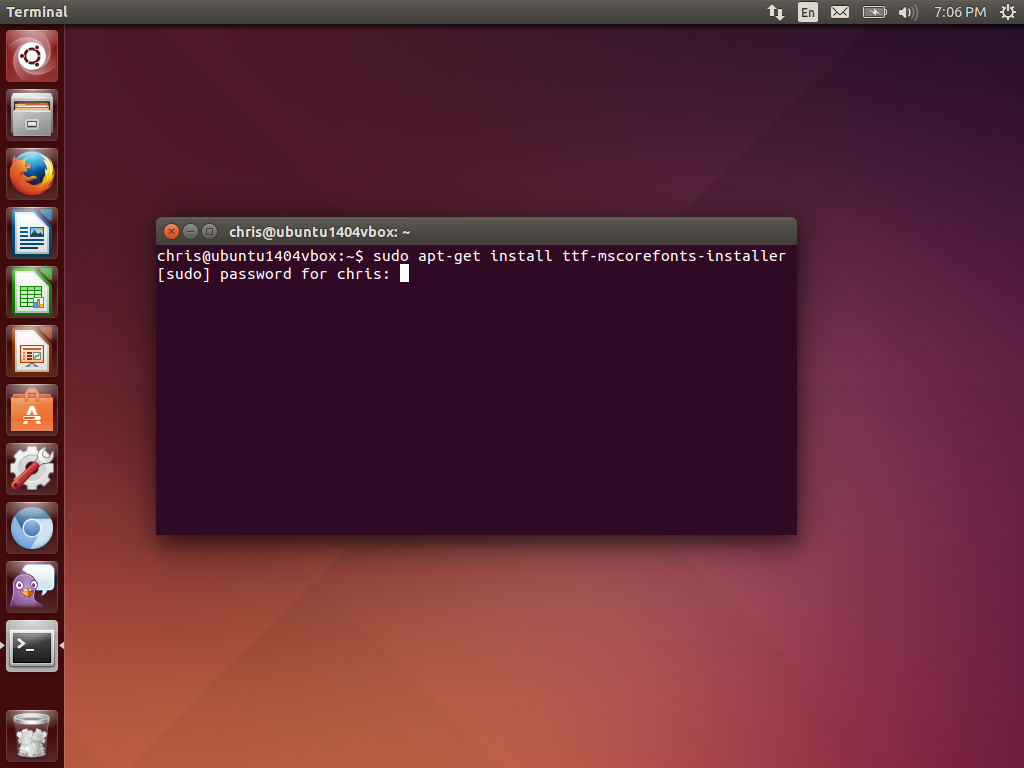Install Microsoft Fonts Opensuse Vs Ubuntu. How can I install applications like Google Chrome on Ubuntu? Are there any commands to install an application? Install Microsoft Fonts Opensuse Review. Windows 10 is a personal computer operating system developed and released by Microsoft as part of the. Ubuntu & rmdir.
If you are a graphic artist, writer, designer, or desktop publisher, then you are likely to need specific fonts installed on your computer. For Linux users this used to be a more difficult task. The good news is that more modern distributions make font installation much easier.
Gone are the days of editing your xorg.conf font path information. Installing fonts in Ubuntu Once you have your handy collection of True Type fonts, you are going to want to create a directory to hold them.
Installing the fonts system-wide will give all users access to them. First, create a font directory in /usr/share/fonts/truetype.
Call this directory newfonts. Issue the command sudo mkdir /usr/share/fonts/truetype/newfonts. You will have to enter your sudo password to complete this task. Once this directory is created, place all your *ttf or *TTF files in the newfonts directory. With the fonts in place you will then need to issue the command fc-cache -f -v to make the system aware of the new fonts. Once this is done, the system knows about the new fonts and all the system users will have access to them.
If you want to make these fonts available only to specific users, then you will follow the same directions except you will add the fonts only to the users' ~/.fonts directory. If the ~/.fonts directory doesn't exist, create it with mkdir ~/.fonts (while logged into the specific users' accounts). Now move (or copy) all of the *ttf and/or *TTF files into the new directory and run fc-cache -f -v to make the users' accounts aware of the fonts. If you have a single-user machine, go with the latter version. Installing fonts in Fedora 7 (or higher). Installing fonts in Fedora is a simpler task. You really only need to dump your *ttf or *TTF files into the user's ~/.fonts directory, log out, and log back in.
The fonts will be recognized without any special tricks. Installing MS Fonts There are many times you will want Microsoft fonts on your system. Fortunately this is only a matter of installing the msttcorefonts package. This is done one of two ways: on an apt-based machine: apt-get install msttcorefonts on a yum based machine: wget yum install rpm-build cabextract rpmbuild -ba msttcorefonts-2.0-1.spec yum localinstall —nogpgcheck /usr/src/redhat/RPMS/noarch/msttcorefonts-2.0-1.noarch.rpm Both of the above instructions will complete the job for you.
The former command will require you to OK the process (see Figure A below.) Figure A. Update Epg On Openbox V8s Review. This installation will prompt you to install x-ttcidfont-conf also, which is not necessary, but will add even more fonts to your system. Getting applications to recognize your new fonts • OpenOffice: This one is a piece of cake. If you have installed the fonts into ~/.fonts and issued the command fc-cache -f -v, OpenOffice will be able to take advantage of them. • Gimp: The Gimp enjoys the same ease of use as OpenOffice.
• Scribus: With Scribus you have to actually configure the new font path. To do this go to File Preferences and you will see the Font icon (see Figure B below.) Figure B From here you configure all aspects of the Scribus desktop publishing application. Click on the Fonts icon and then click on the Additional Paths tab (see Figure C below.) Figure C Click on Add and then navigate to your new font path to add the new path. Doenload Mx Player Pro 4.7 Apk Free. You will notice that when you click Add to add the new path, the.fonts directory doesn't show up. That is because it is a hidden directory. You will have to type in.fonts in the directory text area and click OK in order to add the hidden directory.
